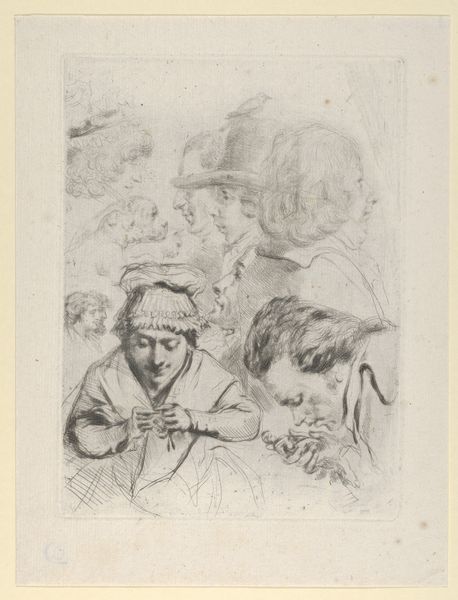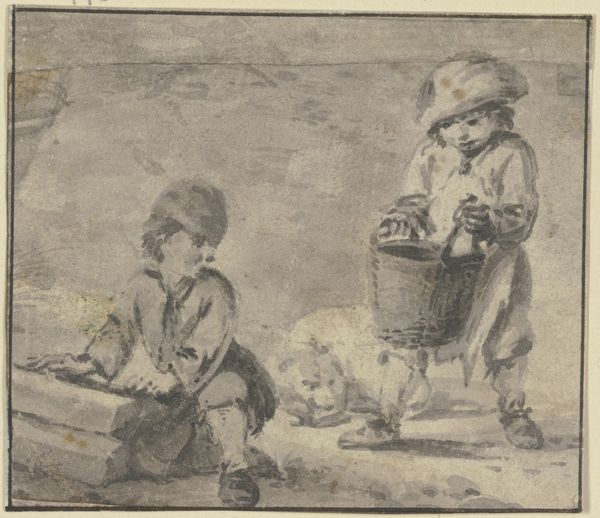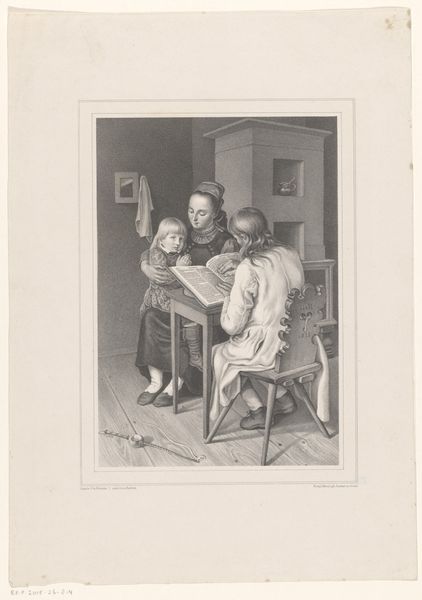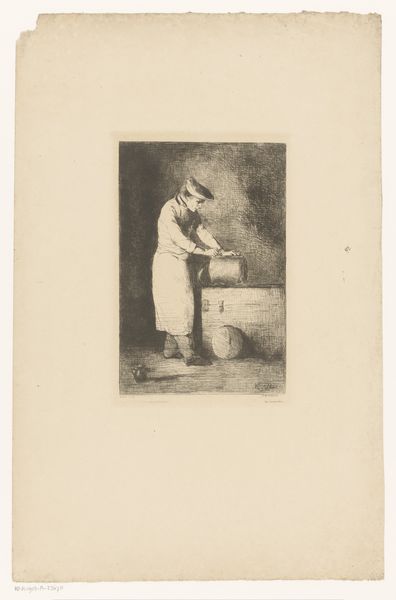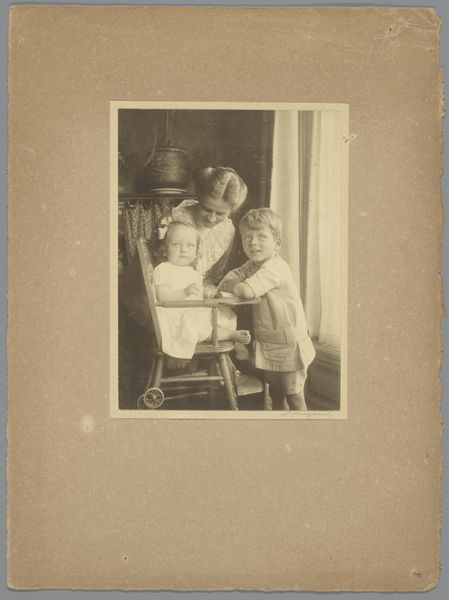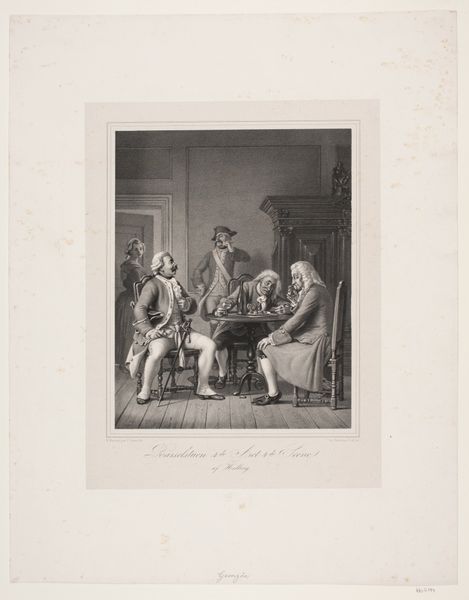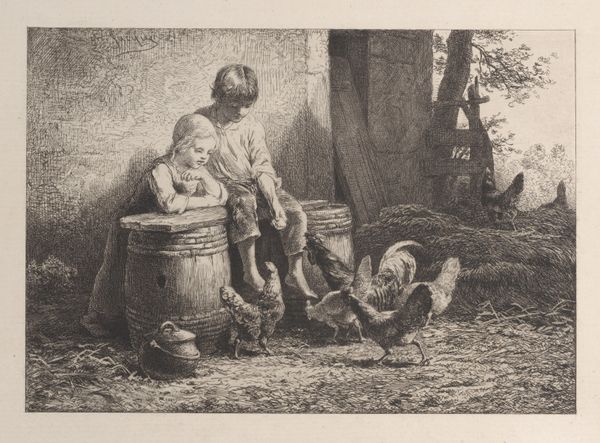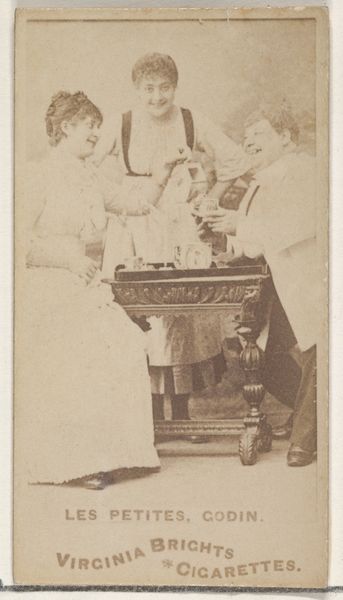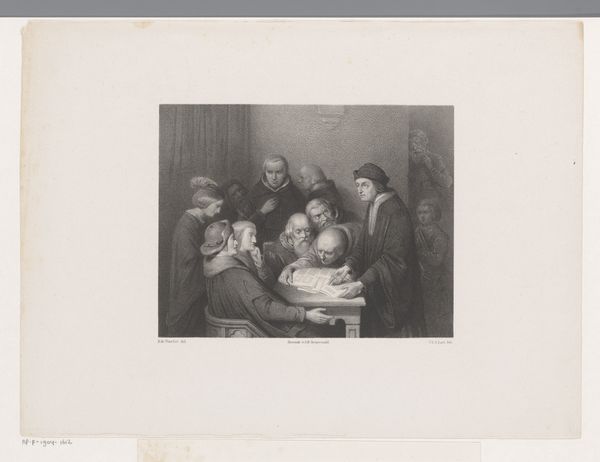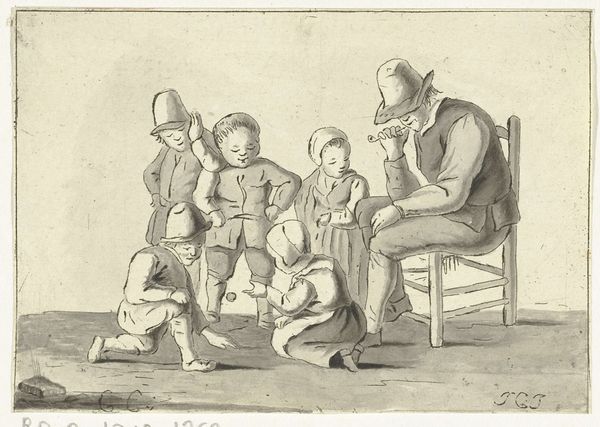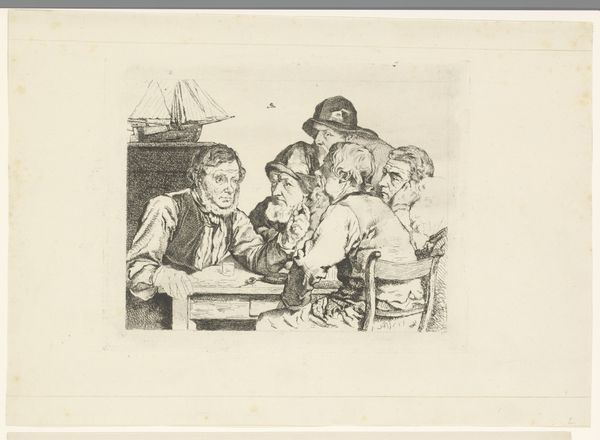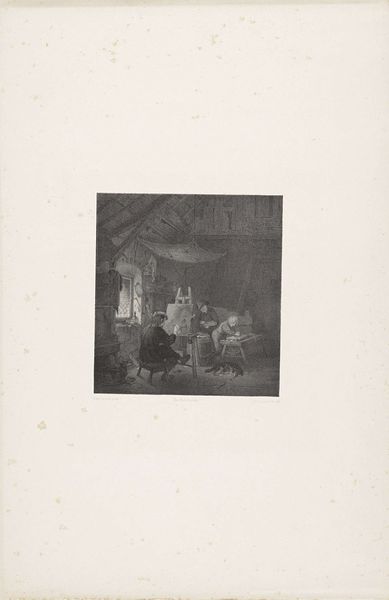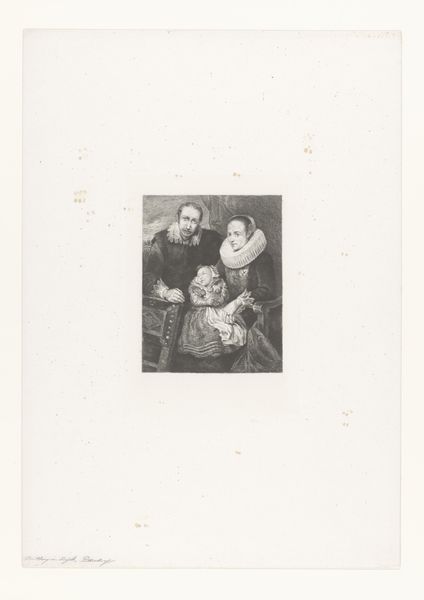
print, photography, gelatin-silver-print
# print
#
street-photography
#
photography
#
culture event photography
#
gelatin-silver-print
#
monochrome photography
#
monochrome
Dimensions: sheet (trimmed to image): 5.8 x 5.5 cm (2 5/16 x 2 3/16 in.)
Copyright: National Gallery of Art: CC0 1.0
Curator: Here we have Robert Frank's gelatin silver print, "Festival—Children," dating to approximately 1941. At first glance, what are your impressions? Editor: A rather sober celebration. The monochrome tones contribute to a subdued mood, despite what I assume is supposed to be a festive activity. The close cropping makes it feel like we've stumbled upon something intimate. Curator: Absolutely. The materiality is crucial here; the gelatin silver print provides that stark contrast and almost documentary feel that belies a deeper constructed image. Considering it was produced during a time of turmoil in Europe, it prompts a question: how might the children's activity be shaped by broader socio-political contexts? Editor: I’m immediately drawn to the pitcher, positioned almost centrally in the frame. The color white represents purity, and its fullness represents wealth, suggesting that it offers more than water to these young celebrants. What are they cutting? Curator: It appears they’re processing something edible, perhaps potatoes or turnips. Food processing connects us with labor, resources, and production cycles often overlooked when admiring art. We get a small glimpse into the means for creating and enjoying sustenance as celebration. Editor: The matching shirts and bowties act like visual echoes, drawing our eyes around the central action of slicing or cutting. I keep coming back to this element as suggestive. I wonder about a loss of innocence? This could simply speak to food scarcity during that time, which offers an interesting contradiction that requires further investigation. Curator: Right. It provokes thought about how children are integrated into and influenced by social, political, and economic landscapes through materials and shared rituals. Editor: Precisely. Frank is inviting us to look beneath a seemingly simple surface of childhood play to observe deeper societal inscriptions upon children. I think, overall, this is a deceptively intricate piece, revealing the human hand and its effect on younger lives during such volatile eras. Curator: Yes, and to observe it critically in a manner beyond aesthetic taste opens up our viewing of visual works for more social reflection. Editor: It certainly inspires a thoughtful engagement. Thank you!
Comments
No comments
Be the first to comment and join the conversation on the ultimate creative platform.
